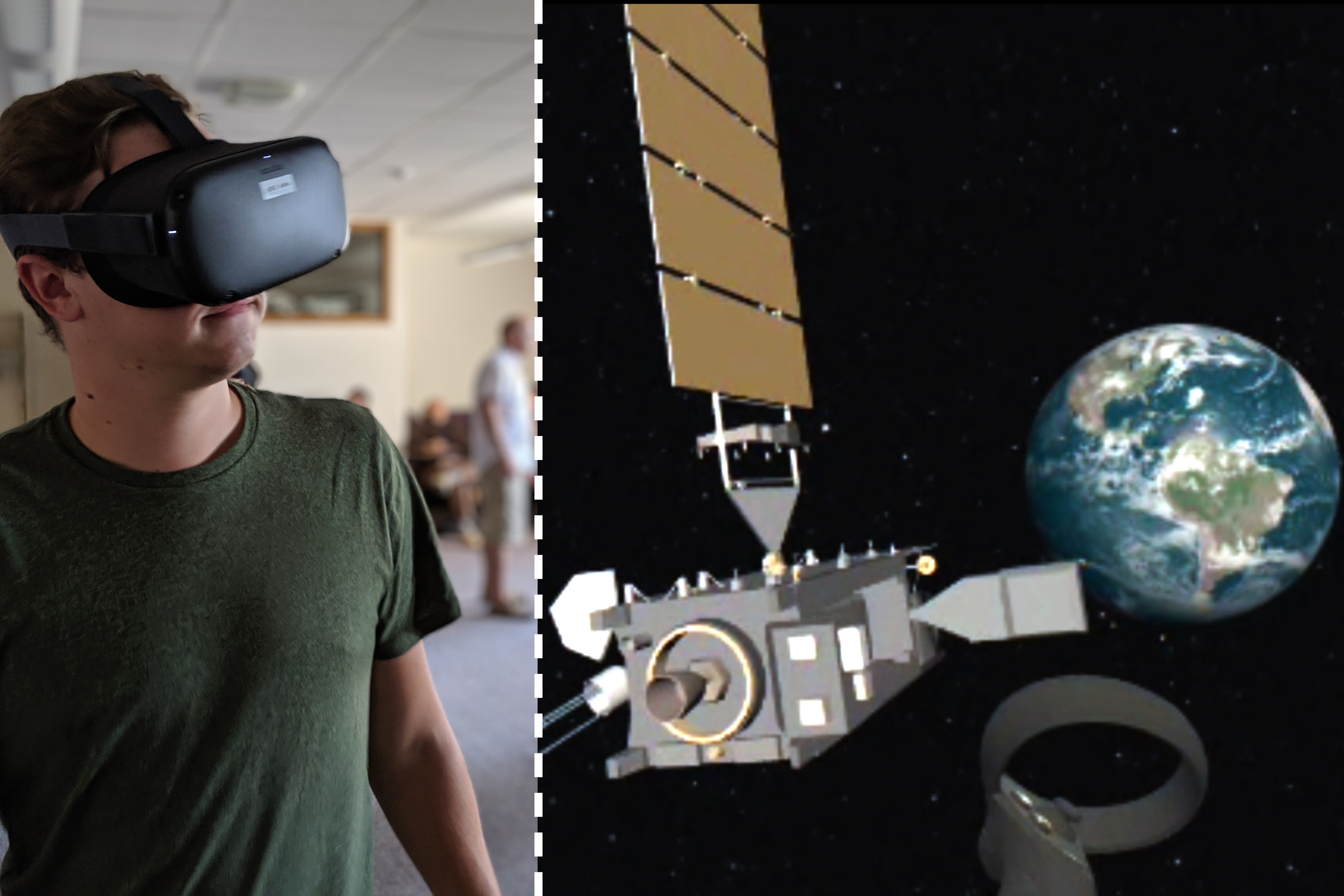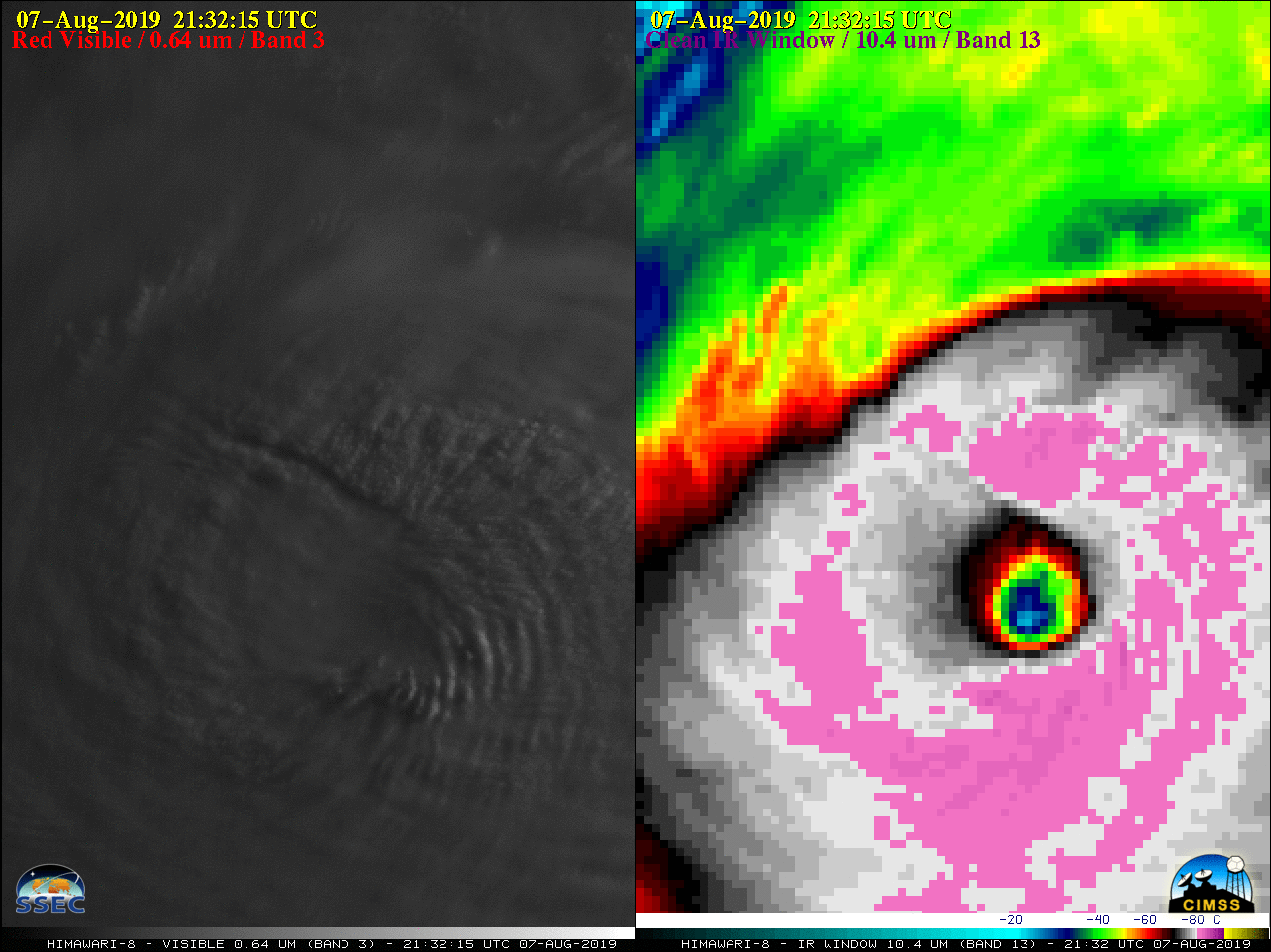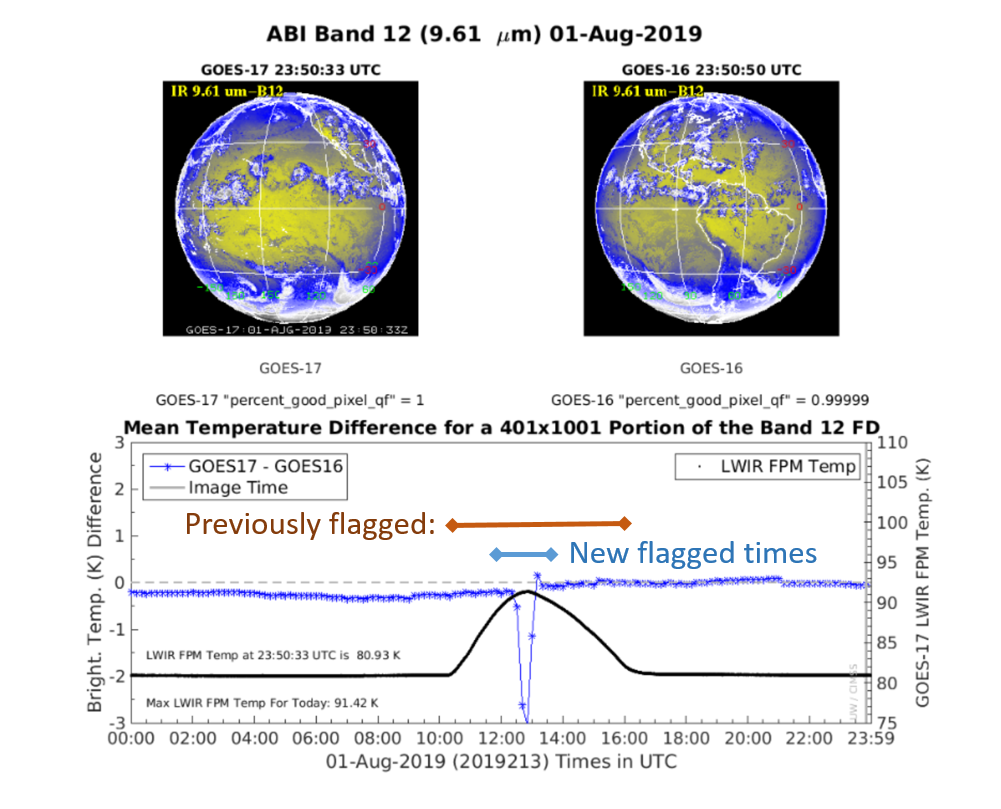
[ Archive ]

 |
CIMSS-NOAA Weekly Report [ Archive ] |
 |
ASPB AND CIMSS WEEKLY HIGHLIGHTS FOR THE WEEK ENDING AUGUST 9, 2019
IN THE PRESS:
SSEC and CIMSS Scientists in the News: SSEC and CIMSS Scientists in the News: Scientists at the University of Wisconsin-Madison (UW) Space Science and Engineering Center (SSEC) and the Cooperative Institute for Meteorological Satellite Studies (CIMSS) provide expert commentary, interviews, and imagery to news media and participate in events to promote science. In the news this week: 1) SSEC News published a story on the inaugural SSEC Tech Camp led by Margaret Mooney, Director of CIMSS Education and Public Outreach. The course was designed to provide underrepresented students an opportunity to sample a wide-range STEM skills and technologies: https://www.ssec.wisc.edu/news/articles/12120/. 2) CIMSS scientist Jordan Gerth spoke with Science magazine on the potential 5G wireless technology to interfere with weather forecasts: https://go.wisc.edu/d09311. 3) CIMSS Satellite Blog contributors Tim Schmit and and Scott Bachmeier published posts on "GOES-17 ABI temperature data quality flags (TDQF) thresholds update" (Aug. 8), "Super Typhoon Lekima in the West Pacific Ocean" (Aug. 8), "Tropical Depression Flossie near Hawai’i" (Aug. 5), "Severe thunderstorms in the Dakotas, as viewed by 4 GOES" (Aug. 3). Read more at the CIMSS Satellite Blog: http://cimss.ssec.wisc.edu/goes/blog/. (M. Mooney, CIMSS, E. Verbeten, SSEC, G. Gerth, CIMSS, T. Schmit, E/RA2, 608-263-0291, S. Bachmeier, CIMSS, J. Phillips, SSEC, 608-262-8164)
 (Click image to enlarge)
(Click image to enlarge)
Figure: Nathan Hataj, a teacher at La Follette High School in Madison, WI, explores a VR simulation looking at weather satellites around the globe during SSEC's Tech Camp. Credit: Eric Verbeten.
 (Click image to enlarge)
(Click image to enlarge)
Figure: JMA 2.5-minute rapid scan Himawari-8 “Red” Visible (0.64 µm) and “Clean” Infrared Window (10.4 µm) images showed the eye and eyewall region of Category 4 Super Typhoon Lekima on Aug. 7, 2019 in the Western Pacific Ocean.
ITEMS FOR THE ADMINISTRATOR:
ITEMS FOR THE ASSISTANT ADMINISTRATOR:
ITEMS FOR THE OFFICE DIRECTOR, STAR:
Manuscript on Passive Microwave Precipitation Retrieval Improvements Published: A manuscript titled "Effects of ice particle representation on passive microwave precipitation retrieval in a bayesian scheme" has been published in the IEEE Transactions on Geoscience and Remote Sensing (doi: https://doi.org/10.1109/TGRS.2018.2886063). This study illustrates modeled passive microwave brightness temperature and precipitation retrieval improvements made possible by incorporating non-spherical renditions of ice particles into a forward radiative transfer model used for NASA Global Precipitation Measurement Mission (GPM) precipitation retrievals. The results of this study will be used to improve GPM Microwave Imager precipitation rate estimates on a near-global scale. Co-authors are Sarah Ringerud (University of Maryland), Mark Kulie (NOAA/NESDIS), David Randel (Colorado State University), Gail Skofronick-Jackson (NASA), and Christian Kummerow (Colorado State University). (M. Kulie, E/RA2, 608-263-6583, mark.kulie@noaa.gov)
ITEMS FOR THE DIVISION CHIEF, CoRP:
New Temperature Thresholds for GOES-17 ABI DQFs goes Operational: Previously, researchers at the Cooperative Institute for Meteorological Satellite Studies (CIMSS) and the Advanced Satellite Products Branch (ASPB) provided the Geostationary Operational Environmental Satellite (GOES)-R Program with new thresholds for when to flag GOES-17 Advanced Baseline Imager (ABI) data during the daily heating period due to the loop heat pipe issue. As of 19:45 UTC on August 8, 2019, the new Look-Up-Table (LUT) went into operations for use in the GOES-17 ABI Data Quality Flags (Data Quality Flags). These hotter thresholds are possible due to the recent implementation of the Predictive Calibration algorithm. Predictive calibration greatly improves the data quality of bands 8-16 on the ABI during periods when the instrument is rapidly heating or cooling, but not yet saturated, resulting in more of the data on either side of the peak heating period being usable. More information is available at https://cimss.ssec.wisc.edu/goes/blog/archives/33832. (T. Schmit, E/RA2, 608-263-0291, tim.j.schmit@noaa.gov, M. Gunshor, CIMSS, J. Nelson, CIMSS).
 (Click image to enlarge)
(Click image to enlarge)
Figure: Top: Thumbnails of GOES-17 and GOES-16 ABI Band 12 (9.6 um) on August 1, 2019. Lower: Time series of GOES-17 minus GOES-16 brightness temperature for a region between the two satellites. Also plotted is the Focal Plane Temperature. The reduced duration of the GOES-17 data to be flagged is highlighted.
SSEC Tech Camp: This week the Space Science and Engineering Center (SSEC) at the University of Wisconsin-Madison welcomed six high school students and five teachers at an inaugural SSEC Tech Camp, a hands-on intensive course in computer programming, satellite technology and all things STEM (Science, Technology, Engineering and Math). Details are at https://www.ssec.wisc.edu/news/articles/12120/. (M. Mooney, CIMSS, (608) 213-5399, S. Lindstrom, SSEC, Brad Pierce, SSEC)
VISITORS:
Representatives for Congressman Pocan Visit CIMSS: Ms. Kate Huffman and Mr. Calvin Boldebuck, Legislative Assistant and Field Representative, respectively, for Congressman Mark Pocan, visited the Cooperative Institute for Meteorological Satellites Studies (CIMSS) and the Space Science and Engineering Center (SSEC) on August 8, 2019. Congressman Pocan represents Wisconsin's Second District in the U.S. House of Representatives. Ms. Huffman and Mr. Boldebuck came to learn more about satellite, weather, and hurricane research and activities at CIMSS/SSEC. During their short visit they were given briefings on new satellite missions in which CIMSS/SSEC is involved, field campaigns, weather prediction and data assimilation, the U.S. Ice Drilling Program, the 2019 hurricane season, and post-hurricane emergency management. (J. Key, E/RA2, 608-263-2605, jeff.key@noaa.gov)
NEXT WEEK:
LOOKING AHEAD:
| Archived Weeklies Page | Submit a report item |